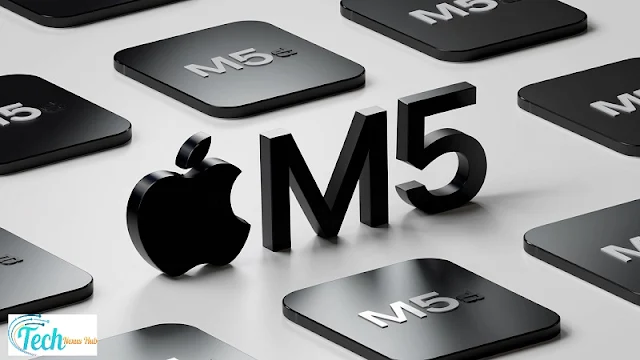Apple is reportedly gearing up to start mass production of he next generation M5 chips beginning the year 2025. And, as supply chain cruciverbalists point out, these chips will employ TSMC’s 3-nanometer, or N3, process technology, which will provide even more performance headroom and power-sipping capability. This is a major milestone for Apple custom silicon continuing on the prosperity of the M1, M2 and M3 chipsets.
Apple's M5 Chips: Mass Production Set for Next Year
The M5 chips are said to use a completely new design similar to block diagrams bringing a new structure which will be far more compact compared to SoC designs. This design’s goal is to try to achieve better space usage along with enhancing the building’s thermal performance. Besides, more iterations of the chips are anticipated for different devices, such as the M5 Pro, M5 Max, and M5 Ultra to fulfill the roles the Apple needs in various products.
Apple will use TSMC’s new N3P process in the M5 series, which is 5% faster and has power consumption decreased within a 5~10% range compared to the N3E process. Such evolutions will surely contribute to increase battery duration and improve computing capabilities always keeping the company ahead in the competition.
One of the most significant changes to the design of the M5 chips is the physical separation of the CPU and the GPU from the fourth generation of M5 chips. The lifting of this modular approach is anticipated to, of course, enhance each part’s performance hence always paving way for higher and better computing undertakings.
With the rollout of the M5 series in progress, Apple also strengthens its commitment to innovation in the field of custom silicon. As the production is anticipated to reach its peak in 2025, the desire of Apple lovers will be unleashed by the new generation of faster and highly efficient devices in response to the challenging needs of advanced computing.
Apple's M5 Chip: New Design and Production Plans for 2025
That new approach will cater for reducing the space of the M5 chips compared to the system-on-chip (SoC) design that Apple has been using in its previous chips. This could expand into actual performance benefits in terms of producing more integrated and thus more compact components that do benefit Apple in terms in optimizing it across its devices. It is further expected that the change will lead to enhanced cooling and a better fitment for Apple’s devices.
Ming-Chi Kuo from TF International Securities explains that the M5 chip is already in the development phase capable of supporting efficiently the integration of Apple’s hardware and software. Currently, Apple aims to start the production of the chips in large quantity in the first half of 2025 as the company continues to expand the limits of Mac’s custom silicon. Like the M1 and M2 chips , the new chip is anticipated to expand based on the success of the company while providing better performance and efficiency.
Since the TSMC’s 3nm process will provide a large jump in computing power and decrease in power consumption, Apple’s M5 chips look forward to reaping from the process. Lower power consumption and increased performance are likely to be among the key features supporting the sales of gadgets based on these chips, with regard to battery back up and speed.
This change may also be a convenient signal for the emergence of new layouts and thin models without losing power. Apple has always evolved its hardware thus, this new chip architecture could lead to even more slimmer devices +performance enhancement in all areas likely to boost productivity, gaming devices etc.
Apple’s M5 chips are expected to be the heart of the next generation of Macs iPads and possibly other devices, as mass production is due to commence by the first quarter of 2025. The novelty of these chips underlines the company’s unceasing endeavours to change nature of computing through the creation of proprietary, ground breaking form of hardware.
Apple's M5 Chips: New Models and Design Innovations for 2025 and Beyond
There are likely to be different versions within an M5 chip family like M5 Pro, M5 Max M5 Ultra among others. These chips are expected to go into production by the second half of 2025 or even earlier next year, 2026. If Apple is to popularize these products then they need to release these as different models to fit different requirements, bottom end consumer, up to professional equipment.
Apple’s M5 chips will be mainly fabricated using TSMC N3P process, which provides an enhanced up to 5% performance. Besides increased performance, these chips will be also characterized by increased power compressor efficiency, and its average power consumption should decrease by 5-10% compared to the N3E process used in the M4 chips. This will be vital to achieve the long battery life while at the same time supporting high performance.
For M5 Pro and M5 Ultra, there is a new plan of a horizontal structure which is SoIC-mH. This design architecture creates opportunities for integrating several Electronics devices circuits to a single chip utilizing a horizontal die-stacking design. This approach could drop space utilization by 30–50% compared to the typical SoC designs, which consequently could proffer thinner devices with fewer assembly heat issues.
It also means boosted thermal characteristics and an altogether new chip structure has emerged. The proposed SoIC-mH design is predicted to reduce thermal throttling which is a frequent problem in high performing chips by managing heat management. This could lead to better reliability when used in the long term and for intensive tasks as gaming or video/video editing.
Also new for the Apple devices, the company is anticipated to split the CPU and GPU design of the M5 chips from the integrated solutions in previous models. This will enable each part in apple to be individual customized so that the whole system can become more effective. This particular strategic change could even potentially enhance the ability of future Macs, next generation iPads, and even other Apple devices.


